Miscellaneous
This section will serve as a grab bag of various bugs which I have yet to give their own page. I expect that items will move into and out of this section.
Until confirmed by an entomologist, the identification of these beasties should be viewed as tentative.
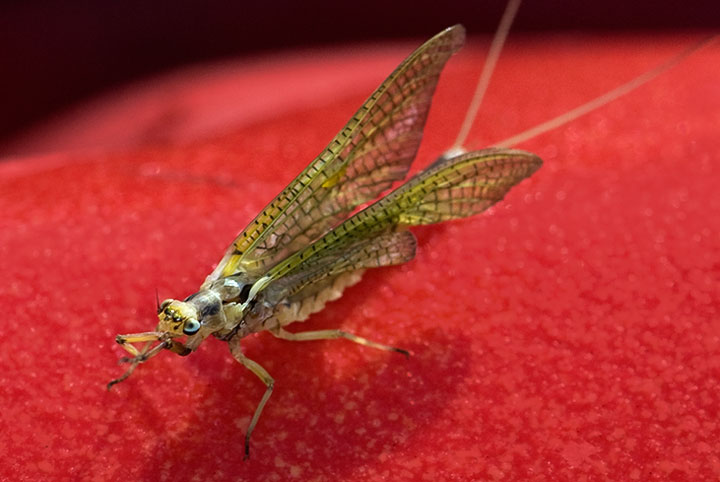 The mayfly is a short-lived aquatic insect. Indeed, the adult lives for such a short time that it doesn’t even eat—its mouth parts are vistigial—and its only function is to reproduce. The long front legs of the male are used to locate and grasp the female during mating—the other legs are useless.
The mayfly is a short-lived aquatic insect. Indeed, the adult lives for such a short time that it doesn’t even eat—its mouth parts are vistigial—and its only function is to reproduce. The long front legs of the male are used to locate and grasp the female during mating—the other legs are useless.
 A different view of a mayfly.
A different view of a mayfly.
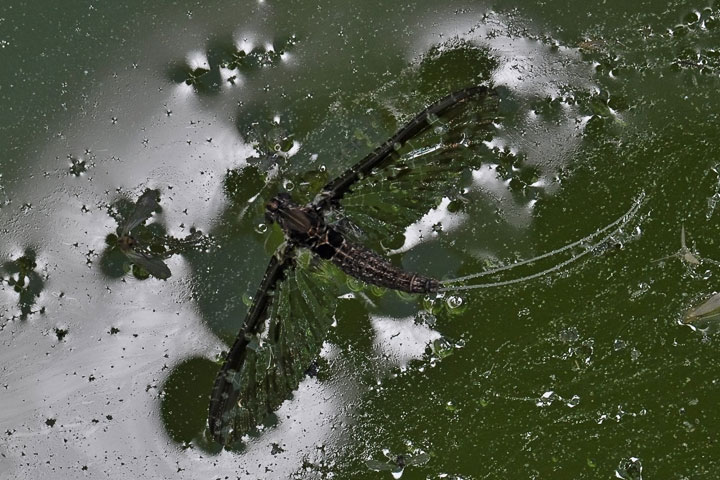 This mayfly will soon make some fish happy.
This mayfly will soon make some fish happy.
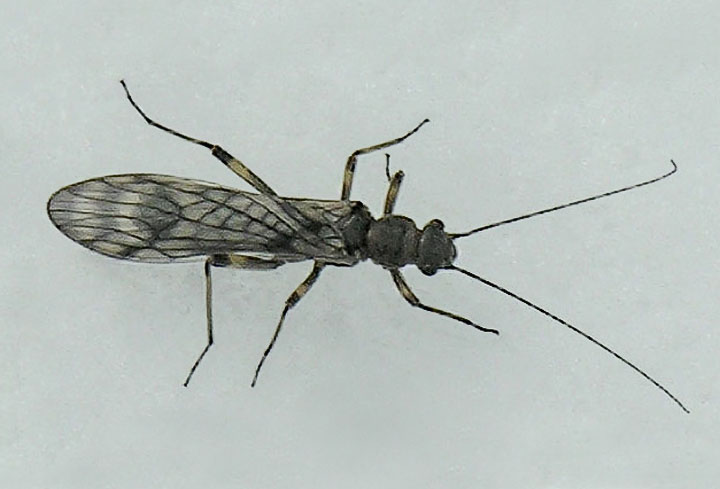 The Giant Stonefly is frequently encountered near water. This one was on snow.
The Giant Stonefly is frequently encountered near water. This one was on snow.
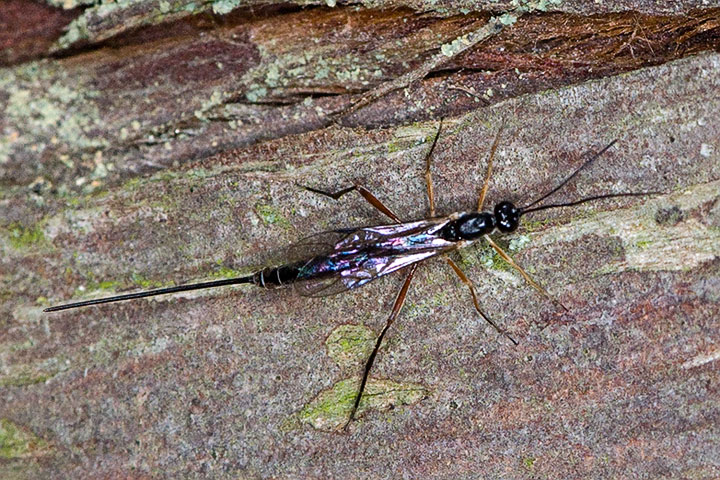 This looks like a female sawfly; the extension at the back being an ovipositor.
This looks like a female sawfly; the extension at the back being an ovipositor.
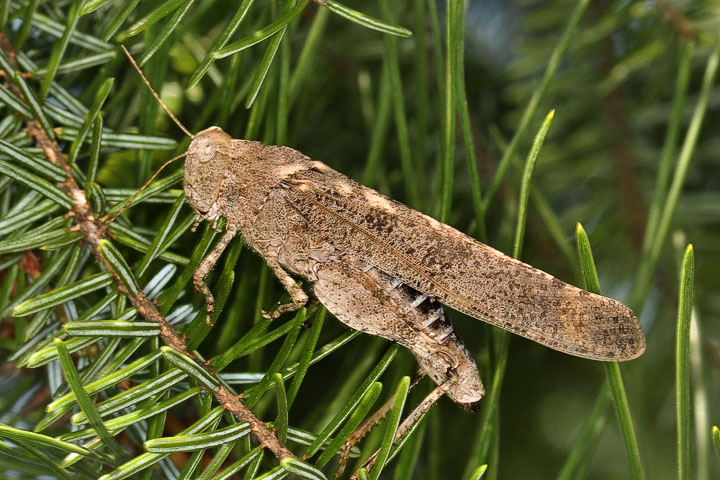 A grasshopper, but which species? When it landed on the grass, its camouflage was so good, I could never find it, but on this douglas fir, it was easy to find.
A grasshopper, but which species? When it landed on the grass, its camouflage was so good, I could never find it, but on this douglas fir, it was easy to find.
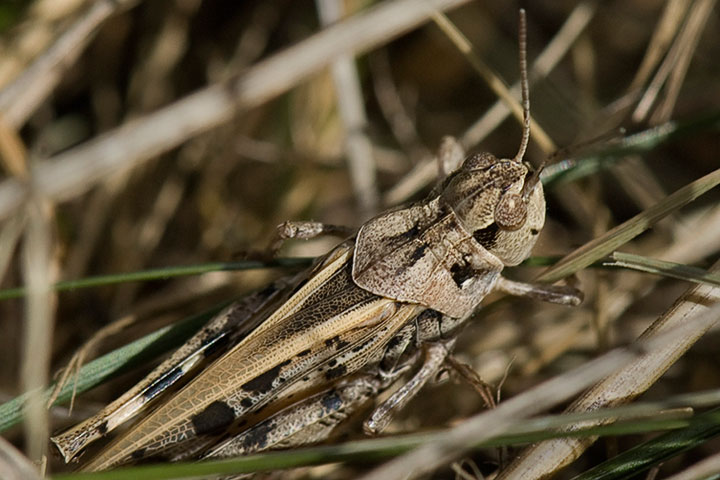 A Clear–winged Grasshopper. When I was a child, I would catch these grasshoppers on a grassy spot alongside the Lake. They are still found at the same spot.
A Clear–winged Grasshopper. When I was a child, I would catch these grasshoppers on a grassy spot alongside the Lake. They are still found at the same spot.
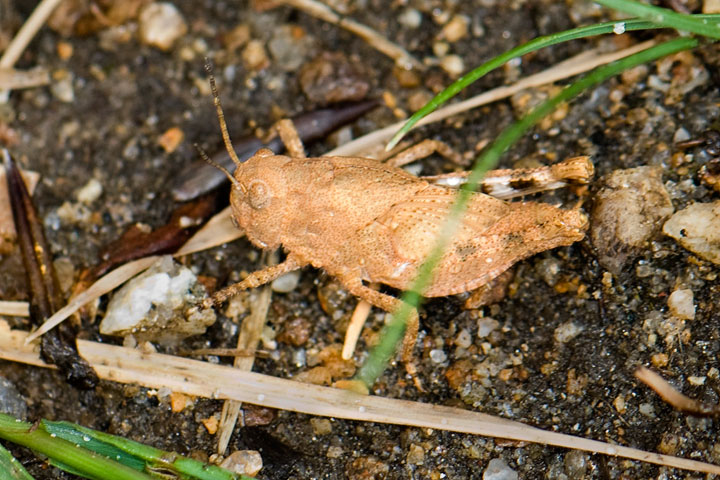 This is probably a grasshopper nymph. A grasshopper goes through three stages: egg, nymph, adult. A nymph molts a number of times before it becomes an adult and can fly.
This is probably a grasshopper nymph. A grasshopper goes through three stages: egg, nymph, adult. A nymph molts a number of times before it becomes an adult and can fly.
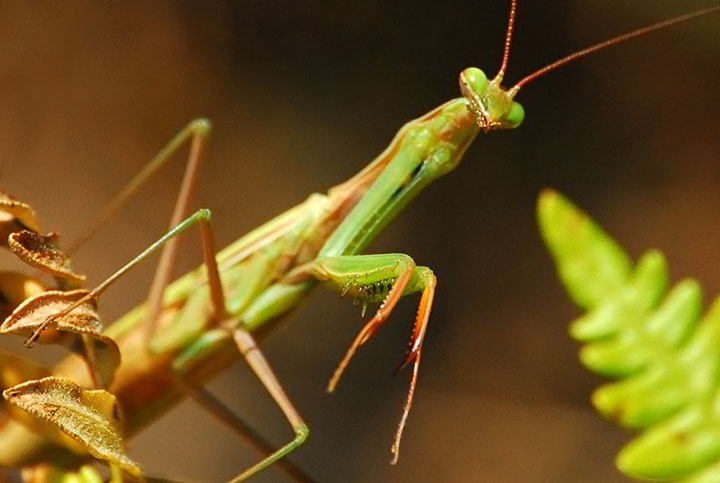 While there is a native mantid in British Columbia, this one is the European mantis which arrived in North America in 1899 and has spread across the continent.
While there is a native mantid in British Columbia, this one is the European mantis which arrived in North America in 1899 and has spread across the continent.
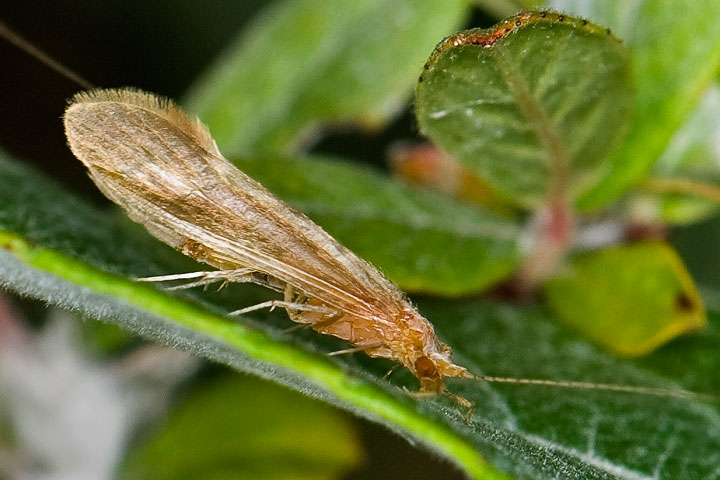 The caddisfly is close relative of moths and, like them, have scales on their wings. The larvae are aquatic, so the caddisfly is found around the Lake.
The caddisfly is close relative of moths and, like them, have scales on their wings. The larvae are aquatic, so the caddisfly is found around the Lake.
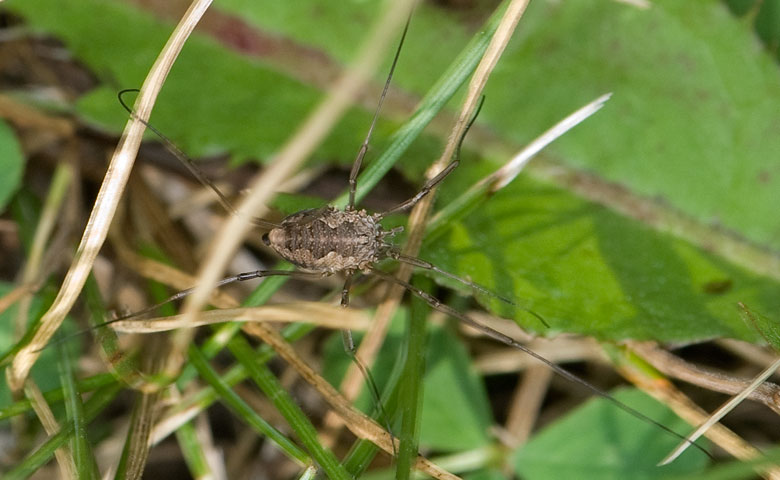 I knew the harvestman as a daddy longlegs as a child. However, despite their eight legs, the harvestman is not a spider: its head is continuous with its abdomen. They are predators and scavengers in the grass.
I knew the harvestman as a daddy longlegs as a child. However, despite their eight legs, the harvestman is not a spider: its head is continuous with its abdomen. They are predators and scavengers in the grass.
Information from Wikipedia: Stoneflies, Mayflies Praying mantis
![]()